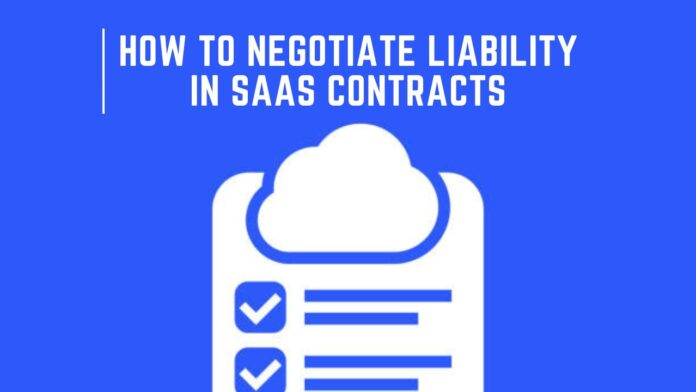Negotiating liability in Software as a Service (SaaS) contracts can be a challenging task for businesses. SaaS contracts often contain provisions that limit the liability of the SaaS provider in the event of a breach or failure of the service. However, businesses must ensure that they are adequately protected in the event of any issues with the service. In this blog post, we’ll take a closer look at how businesses can negotiate liability in SaaS contracts.
Identify Potential Risks
Before negotiating liability in a SaaS contract, businesses must identify potential risks associated with the service. This may include the risk of data breaches, system failures, or service interruptions. Once identified, businesses can develop a plan for mitigating these risks and negotiate liability provisions that reflect the level of risk and the impact of any potential issues.
Understand the Provider’s Liability Position
When negotiating liability in a SaaS contract, it’s essential to understand the provider’s liability position. Many SaaS providers will seek to limit their liability through various provisions, such as disclaimers, limitations of liability, and indemnification clauses. Businesses must understand these provisions and negotiate terms that are reasonable and provide adequate protection.
Define the Scope of Liability
One critical aspect of negotiating liability in a SaaS contract is defining the scope of liability. Businesses should ensure that the liability provisions in the contract clearly define the types of damages that are covered and the circumstances under which the provider will be liable. This may include the level of responsibility for system failures, data breaches, or service interruptions. Defining the scope of liability will help businesses to identify and mitigate risks more effectively.
Negotiate the Cap on Liability
Another essential consideration when negotiating liability in a SaaS contract is the cap on liability. A cap on liability sets a limit on the amount of damages that the provider will be liable for in the event of a breach or failure of the service. This is often expressed as a monetary amount or a percentage of the fees paid by the customer. Businesses should negotiate a cap on liability that reflects the level of risk associated with the service and provides adequate protection.
Address Indemnification
Indemnification is another critical consideration when negotiating liability in a SaaS contract. Indemnification clauses typically require the provider to indemnify the customer against any losses, damages, or claims arising from the provider’s breach or failure to perform under the contract. Businesses should ensure that the indemnification provisions in the contract are clear and comprehensive and that they adequately protect the customer’s interests.
Consider the Provider’s Insurance Coverage
Finally, when negotiating liability in startup SaaS contracts, businesses should consider the provider’s insurance coverage. Many SaaS providers carry liability insurance that may provide additional protection in the event of a breach or failure of the service. Businesses should review the provider’s insurance policies and negotiate provisions that require the provider to maintain adequate insurance coverage and provide proof of coverage to the customer.
Negotiating liability in a SaaS contract is a critical aspect of ensuring that businesses are adequately protected in the event of any issues with the service. Businesses must identify potential risks, understand the provider’s liability position, define the scope of liability, negotiate the cap on liability, address indemnification, and consider the provider’s insurance coverage. By doing so, businesses can negotiate liability provisions that reflect the level of risk associated with the service and provide adequate protection in the event of any issues.









